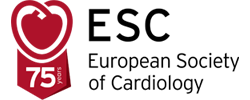Sophia Antipolis, France – 28 Aug 2021: The European Society of Cardiology (ESC) and European Association for Cardio-Thoracic Surgery (EACTS) Guidelines for the management of valvular heart disease are published online today in European Heart Journal.1,2
It is estimated that 13% of people aged 75 and older in high-income countries have valvular heart disease (VHD). Prevalence increases markedly after age 65. Patients with mild or moderate VHD, and some patients with severe VHD, may have no symptoms and be unaware of their disease. Severe VHD leads to deterioration of the heart’s function, which can cause shortness of breath, chest pain, palpitations and fainting. This may require hospitalisation and intervention, and can lead to death.
The heart has four valves; these guidelines focus on the aortic, mitral and tricuspid valves which can be affected by narrowing (stenosis), restricting blood flow, or inability to close allowing blood to flow backwards (regurgitation/leakage). Both issues can coexist in one valve. In addition, VHD can occur in more than one valve at the same time.
“VHD is too often undetected, and the guidelines stress the importance of clinical examination as the first step in diagnosis,” said ESC task force chairperson Professor Alec Vahanian of the University of Paris, France. “Non-invasive evaluation using echocardiography first, and other cardiac imaging techniques when needed, is essential to assess severity and catheterisation should only be used when imaging is inconclusive.”
Treatments include medication and percutaneous or surgical valve replacement/repair. The choice and timing of treatment should be made by a Heart Team of clinical and interventional cardiologists, cardiac surgeons, imaging specialists, cardiovascular anaesthesiologists, and nurses – considering clinical and anatomical factors, coexisting conditions which are frequent in the elderly, and patient preferences.
Interventions (percutaneous or surgery) are indicated in symptomatic patients if there is an expected benefit. Decision-making in asymptomatic patients must weigh the risk of intervention against the expected natural history of VHD – if rapid symptom progression is predicted, intervention may be justified if the procedural risk is low. In elderly patients, decisions should consider the estimated impact of treatment on life expectancy and quality of life.
“Patients’ expectations and values are an important part of the decision-making process,” said EACTS task force chairperson Professor Friedhelm Beyersdorf of the University of Freiburg, Germany. “Patients and their families should be thoroughly informed and assisted in their choices. Symptom relief on its own may justify intervention if it is a priority for the patient. However, treatment is considered futile when it is not expected to prolong life or relieve symptoms.”
Regarding surgery, increased experience and procedural safety have led to expanded indications toward earlier surgery in asymptomatic patients with aortic stenosis, aortic regurgitation or mitral regurgitation. The guidelines emphasise the need for more comprehensive evaluation and earlier surgery in tricuspid regurgitation to avoid irreversible heart damage.
Regarding percutaneous techniques, good results in high risk or inoperable patients with aortic stenosis and mitral regurgitation have led to increased indications, provided futility is avoided. The guidelines state that the encouraging preliminary experience with transcatheter tricuspid valve interventions suggests a potential role for inoperable patients, but this needs to be confirmed by further evaluation.
Professor Vahanian said: “The use of surgery and transcatheter techniques as complementary treatment options has substantially increased the number of patients with aortic stenosis and mitral regurgitation undergoing interventions in the past decade.”
The guidelines note that sufficient volumes of procedures are required to deliver high quality care, but precise numbers per physician or hospital remain controversial due to inequalities between high- and middle-income countries. Professor Beyersdorf said: “Performance is not exclusively related to procedural volumes and Heart Valve Centres should conduct internal quality assessment by systematically recording procedural data and patient outcomes.”
ENDS

 Our mission: To reduce the burden of cardiovascular disease.
Our mission: To reduce the burden of cardiovascular disease.